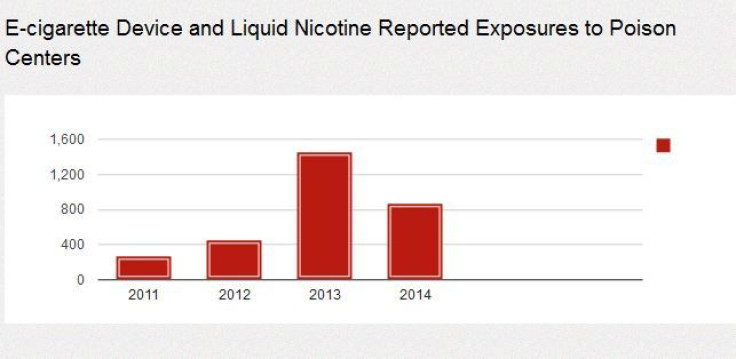Flavored Liquid Nicotine's Appeal To Small Children Leads To Dramatic Rise In Poison Center Calls

Calls to poison centers dramatically increased over the past few years due to exposure to liquid nicotine from e-cigarettes with more than half involving children under the age of 5, the Centers for Disease Control and Prevention (CDC) reported earlier this week. “This report raises another red flag about e-cigarettes — the liquid nicotine used in e-cigarettes can be hazardous,” said CDC Director Dr. Tom Frieden. “E-cigarette liquids as currently sold are a threat to small children because they are not required to be childproof, and they come in candy and fruit flavors that are appealing to children.”

Analysis of monthly poison center calls nationwide showed an increase from just one per month in September 2010 to 215 per month in February 2014. About half (51 percent) of the poison center calls reported exposure issues in young children under age 5, while about 42 percent involved people over the age of 20. According to the American Association of Poison Control Centers (AAPCC), the greater numbers concerning children is consistent with exposures to all substances combined, according to their data. “Some children and toddlers who come in contact with e-cigarette devices or liquid nicotine have become very ill; some even requiring ER visits with nausea and vomiting being the most significant symptoms,” noted the AAPCC.
“Use of these products is skyrocketing and these poisonings will continue,” Frieden said. The number of poison center calls per month concerning conventional cigarettes did not show a similar uptick during the same time period. Overall, AAPCC data found a 218 percent increase when comparing the number of e-cigarette devices and liquid nicotine reported exposures in 2012 with those reported 2013.
Calls related to exposure in children may be most prevalent, but the numbers are high for adults as well. A recent Turkish study focused on a case of acute myocardial infarcation due to liquid nitotine exposure in a young man, with no family history of cardiovascular disease of other risk factors. The 24-year-old had been smoking one pack of cigarettes daily for four years before switching to e-cigarettes. Free of symptoms one month later, the young man may be an example of a possible risk factor involving e-cigarettes — though one person’s experience is hardly evidence of a trend.
By comparison, data for the CDC study examined numerous calls reporting exposure to conventional cigarettes, e-cigarettes, or nicotine liquid used in e-cigarettes: a total of 2,405 e-cigarette and 16,248 cigarette exposure calls during the span of September 2010 through February 2014. The poison centers serve all 50 states, the District of Columbia, and U.S. Territories. According to the report, the total number of poisoning cases is likely higher because not all exposures might have been reported to poison centers.



























